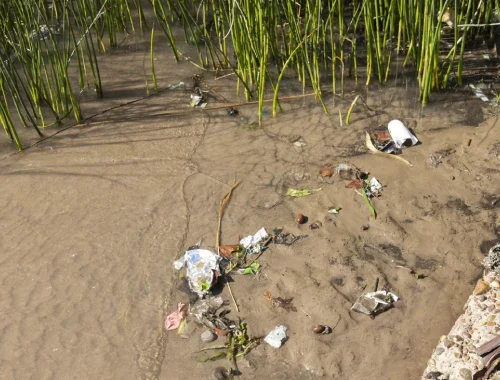British Sign Language Added 200 New Environmental-Related Signs to Its Vocabulary

Photo: Freepik
Accessibility is central to sustainable development. Leaving no one behind involves allowing everyone access to information and meaningful communication, including people with disabilities. Recently, 200 new environment-related signs were added to the British Sign Language vocabulary.
Communicating with Sign Language
Sign language is primarily used by the Deaf community to communicate. The language relies on visual cues from hands, eyes, facial expressions, and movements to deliver messages and information. There are more than 300 sign languages spoken worldwide. Each country has its own sign languages that are unique to their culture.
Like any other language, sign language has its own grammatical structure and rules that evolve over time. People can use a gesture—also called a sign—to indicate a word. They can also spell the word letter by letter when it doesn’t have an official sign yet.
Not long ago, spelling words letter by letter was how the Deaf community discussed complex, environmental-related terms in British Sign Language (BSL). Fortunately, this is no longer the case, as 200 new environment-related signs were added to the BSL vocabulary through the BSL Glossary Project.
The British Sign Language Glossary Project
The BSL Glossary Project is a project of the Scottish Sensory Centre. It aims to develop lists of subject-specific terms in British Sign Language. Aside from the sign, the group of scientists and sign language experts involved in the project also explained the terms’ definitions in BSL, so it’s easier for people to understand. The BSL Glossary Project targets Deaf youth at school and those who want to learn from the internet.
When a word is signed with a gesture, people can better visualize the term than when it’s spelled by letters. For instance, signing the term ‘greenhouse gas’ involves forming circles with closed fists and moving them around to illustrate how gas molecules move in the air. Essentially, adding signs for environment-related terms allows people with hearing impairments to better understand complex concepts and participate in the discussion.
Dr Audrey Cameron, a Chancellor’s Fellow at the University of Edinburgh leading the project, shared her experience observing a class studying how things float and sink. When the teacher used the sign for ‘density’ instead of spelling it by letters, the students showed better enthusiasm and understanding while learning.
“I thought – these five-year-olds are not going to get this. But some time after the end of the lesson, they were asked a question about why things float or sink, and they all used the sign for density,” Dr Cameron said to BBC.
Improving Language Accessibility
Language is the key to accessibility. It can bridge the information gap and allow people to participate in discussions about the world’s pressing matters. Therefore, continuously upgrading the vocabulary of sign languages across the globe becomes crucial to improve accessibility for the Deaf community, inviting them to actively participate in various initiatives to advance sustainable development missions.
Editor: Nazalea Kusuma
Thank you for reading!
Green Network Asia – International Annual Individual Membership supports your personal and professional growth with unlimited online access to our “Exclusive Content” platform purposefully designed to showcase cross-sectoral insights on sustainable development and sustainability in the Asia Pacific and beyond. Enjoy the Membership benefits, including -but not limited to- public policy & regulatory updates, easy summaries of research findings & reports, and impact stories from governments, businesses, and civil society.

Kresentia Madina
Madina is the Assistant Manager for Membership at Green Network Asia. She graduated from Universitas Indonesia with a bachelor's degree in English Literature. She has three years of professional experience in editorial and creative content creation, editing, and research.


 Upholding the Machángara River’s Rights of Nature Against Pollution
Upholding the Machángara River’s Rights of Nature Against Pollution  Accelerating Gender-Responsive Disaster Management with Sendai Gender Action Plan
Accelerating Gender-Responsive Disaster Management with Sendai Gender Action Plan  ASEAN and the EU Support Sustainable Connectivity with a Higher Education Program
ASEAN and the EU Support Sustainable Connectivity with a Higher Education Program  Australia Proposes Right to Housing Bill to Tackle Housing Crisis
Australia Proposes Right to Housing Bill to Tackle Housing Crisis  World Cities Summit 2024: A Trigger to Help Build a Sustainable Singapore
World Cities Summit 2024: A Trigger to Help Build a Sustainable Singapore  Mama Bambu: How Women in Flores, Indonesia Take Part in Environmental Conservation
Mama Bambu: How Women in Flores, Indonesia Take Part in Environmental Conservation